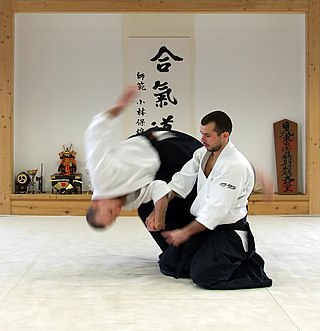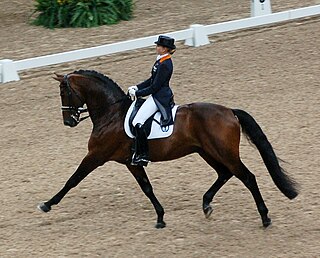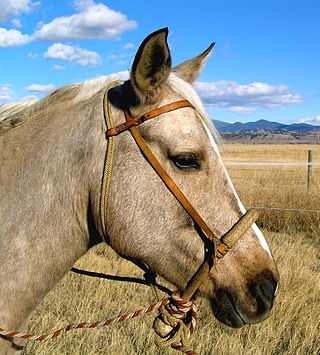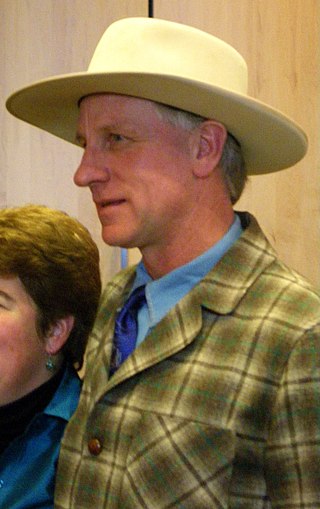
Aikido is a modern Japanese martial art that is split into many different styles, including Iwama Ryu, Iwama Shin Shin Aiki Shuren Kai, Shodokan Aikido, Yoshinkan, Renshinkai, Aikikai and Ki Aikido. Aikido is now practiced in around 140 countries. It was originally developed by Morihei Ueshiba, as a synthesis of his martial studies, philosophy and religious beliefs. Ueshiba's goal was to create an art that practitioners could use to defend themselves while also protecting their attackers from injury. Aikido is often translated as "the way of unifying (with) life energy" or as "the way of harmonious spirit". According to the founder's philosophy, the primary goal in the practice of aikido is to overcome oneself instead of cultivating violence or aggressiveness. Morihei Ueshiba used the phrase masakatsu agatsu katsuhayabi" to refer to this principle.

Dressage is a form of horse riding performed in exhibition and competition, as well as an art sometimes pursued solely for the sake of mastery. As an equestrian sport defined by the International Equestrian Federation, dressage is described as "the highest expression of horse training" where "horse and rider are expected to perform from memory a series of predetermined movements.".

Equestrianism, commonly known as horse riding or horseback riding, includes the disciplines of riding, driving, and vaulting. This broad description includes the use of horses for practical working purposes, transportation, recreational activities, artistic or cultural exercises, and competitive sport.

Classical dressage evolved from cavalry movements and training for the battlefield, and has since developed into the competitive dressage seen today. Classical riding is the art of riding in harmony with, rather than against, the horse.

Equitation is the art or practice of horse riding or horsemanship.
On Horsemanship is the English title usually given to Περὶ ἱππικῆς, peri hippikēs, one of the two treatises on horsemanship by the Athenian historian and soldier Xenophon. Other common titles for this work are De equis alendis and The Art of Horsemanship. The other work by Xenophon on horsemanship is Ἱππαρχικὸς, hipparchikos, usually known as Hipparchicus, or The cavalry commander. The title De re equestri may refer to either of the two.

Natural horsemanship is a collective term for a variety of horse training techniques which have seen rapid growth in popularity since the 1980s. The techniques vary in their precise tenets but generally share principles of "a kinder and gentler cowboy" to develop a rapport with horses, using methods said to be derived from observation of the natural behavior of free-roaming horses and rejecting abusive training methods.

Horse training refers to a variety of practices that teach horses to perform certain behaviors when commanded to do so by humans. Horses are trained to be manageable by humans for everyday care as well as for equestrian activities, ranging anywhere from equine sports such as horse racing, dressage, or jumping, to therapeutic horseback riding for people with disabilities.

A hackamore is a type of animal headgear which does not have a bit. Instead, it has a special type of noseband that works on pressure-points on the face, nose, and chin. Hackamores are most often seen in western riding and other styles of riding derived from Spanish traditions, and are occasionally seen in some English riding disciplines such as show jumping and in the stadium phase of eventing. Various hackamore designs are also popular for endurance riding. While usually used to start young horses, hackamores are often seen on mature horses with dental issues that would make the use of a bit painful, and on horses with mouth- or tongue-injuries that would be aggravated by a bit. Some riders also like to use them in the winter to avoid putting a frozen metal bit into a horse's mouth. In the Charro tradition of Mexico, the jáquima and bozal substituted for the serrated iron cavesson used in Spain for training horses.

Draw reins and running reins are pieces of riding equipment used for training that use the mechanical advantage of a 'single movable pulley' to cause the horse to bring its head down and inward. While a regular rein is the strap that attaches to the bit and is held by the rider, these types of reins slide through the bit ring, adding leverage to the rider's hands and arms, allowing the rider to force the horse's head into a desired position.

A "baucher" is also a type of bit, named after the man.

Dan M. "Buck" Brannaman is an American horse trainer and a leading clinician with a philosophy of handling horses based on classical concepts from the vaquero tradition; working with the horse's nature, using an understanding of how horses think and communicate to train the horse to accept humans and work confidently and responsively with them.

Riding aids are the cues a rider gives to a horse to communicate what they want the animal to do. Riding aids are broken into the natural aids and the artificial aids.
Parelli Natural Horsemanship is a program of natural horsemanship, founded in 1981 by Pat Parelli. The program is headquartered in Pagosa Springs, Colorado.

A bitless bridle is a general term describing a wide range of headgear for horses or other animals that controls the animal without using a bit. Direction control may also be via a noseband or cavesson, if one is used. The term hackamore is the most historically accurate word for most common forms of bitless headgear. However, some modern bitless designs of horse headgear lack the heavy noseband of a true hackamore and instead use straps that tighten around a horse's head to apply pressure in various ways. These are often specifically patented and marketed as "bitless bridles", usually referencing a particular type of headgear known as the cross-under, though other designs are sometimes also given similar names.
Pat Parelli is an American horse trainer who practices natural horsemanship and founded the Parelli Natural Horsemanship program.
Melanie Smith is an equestrian from the United States and Olympic champion.

Natural hoof care is the practice of keeping horses so that their hooves are worn down naturally, or trimmed to emulate natural wear, so they do not suffer overgrowth, splitting and other disorders. Horseshoes are not used, but domesticated horses may still require trimming, exercise and other measures to maintain a natural shape and degree of wear.
John Lyons is an American horse trainer in the field of natural horsemanship. Lyons has been presenting training clinics and horsemanship symposia since 1980, has written several books on horses and horse training, and is the founder of John Lyons' Perfect Horse magazine. He lives and works out of Parachute, Colorado.

Warwick Schiller is a horse trainer, author, and podcaster who was born in Young, New South Wales, Australia. After moving to the United States to begin training horses, he became an NRHA Reserve World Champion. He also represented Australia at the 2010 & 2018 World Equestrian Games. His training philosophy combines natural horsemanship with elements of psychology and mindfulness.














